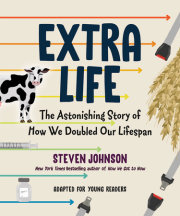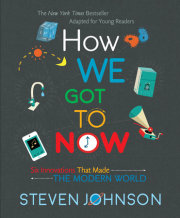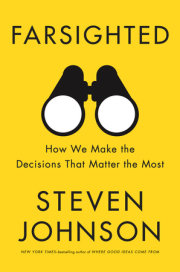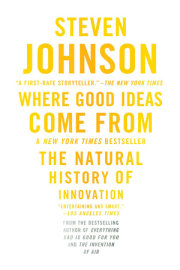Commercial airplane crashes are one of the few events guaranteed a place on the front page of every national newspaper. Somewhat less common on the front page, however, is a story about a commercial airplane crash that didn’t happen. But every now and then one of these non-events manages to cross the threshold into newsworthiness. One such unlikely story appeared on page one of the January 12, 2009, edition of USA Today: “Airlines Go Two Years with No Fatalities,” the headline proclaimed. An analysis by the paper had discovered that the U.S. commercial aviation industry had achieved a milestone unprecedented in the history of modern air travel: despite the dramatic increase in flights compared with earlier decades, not a single person had perished in a commercial air accident during the years 2007 and 2008.
A two-year stretch with zero fatalities was, statistically speaking, a remarkable feat. Only four times since 1958 had the industry managed to make it through one year without a fatal accident. But the safety record was part of a long-term trend: in the post-9/11 period, chances of dying on a commercial flight were nineteen in 1 billion; an almost 100 percent improvement over the already excellent odds of flying in the 1990s. According to MIT professor Arnold Barnett, this meant that an American child was more likely to be elected president of the United States in his or her lifetime than to die in a commercial jet flight.
The story caught my eye in part because I had long maintained that news organizations presented a misleading slant on current events—not the conventional slant of the Left-Right political world, but the more subtle bias of being more interested in bad news. “If it bleeds, it leads” might be a good strategy for selling papers, but it necessarily skews our collective sense of how well we are doing as a society. We hear about every threat or catastrophe, but the stories of genuine progress get relegated to the back pages, if they run at all.
But this USA Today article was bucking that trend of negative bias. And so, inspired by its refreshing story of progress, I decided to write a little essay about it, for a website at which I happened to be a guest contributor that week. I summarized the article’s findings, and made the point that we might have fewer people suffering from fear of flying (and thus spending less time on much more dangerous highways) if the media did a better job of reminding us of these genuinely extraordinary achievements.
A more superstitious person might have worried that saying such things in public was tempting fate. In fact, when I had talked about airline safety with friends in the past, I’d often been accused of just that, a criticism that I would inevitably laugh off. Surely fate had better things to do than worry about my monologues.
But within a few hours of publishing my little riff about airline safety, while I was sitting in a television studio waiting to do a book promotion, my phone began buzzing with e-mails and text messages from friends who had seen my piece. A US Airways jet had crash-landed in the icy Hudson. Look what you did, my friends said. I had tempted fate, and fate had slapped me back across the face.
By the time I actually managed to get to a television set to see the live report, it was clear that the plane had in fact survived the landing with minimal structural damage, and a significant number of survivors were clearly visible standing on the wings, waiting for the ferries and police boats that would rescue them. I penned a quick, sheepish entry promising to keep mum about air safety for a while, and mothball that piece I was working on about the planet’s amazing streak of avoiding species-extinguishing asteroid collisions.
Then a funny—and wonderful—thing happened. The world quickly learned that all 155 passengers and crew aboard flight 1549 had survived, with almost no serious injuries. Flight 1549 went from being a devastating rebuke to my optimism about commercial aviation to being a ringing endorsement of it. If you believed in that sort of thing, you might have said that I had tempted fate, and fate had blinked.
Of course, I had nothing to do with the safe landing of US Airways 1549. The question was, Who or what was responsible for that plane managing to lose two engines during takeoff and still keep its cargo secure? The mass media quickly offered up two primary explanations, both of which turned out to be typical interpretations of good news. First there was the hero narrative: Captain Chesley “Sully” Sullenberger, who had indeed brilliantly navigated his plane into the river with great poise under unthinkable pressure. And then there was the quasi-magical rhetoric that quickly became attached to the event, the Miracle on the Hudson. Those were the two options. That plane floating safely in the Hudson could be explained only by superheroes or miracles.
There was no denying Sullenberger’s achievement that day, but the fact is, he was supported by a long history of decisions made by thousands of people over the preceding decades, all of which set up the conditions that made that perfect landing possible. A lesser pilot could have still failed catastrophically in that situation, but as good as Sullenberger was, he was not working alone. It was surprising and thrilling that all 155 people survived the crash, but there was nothing miraculous about it. The plane survived because a dense network of human intelligence had built a plane designed to withstand exactly this kind of failure. It was an individual triumph, to be sure, but it was also, crucially, a triumph of collectively shared ideas, corporate innovation, state-funded research, and government regulation. To ignore those elements in telling the story of the Miracle on the Hudson is not to neglect part of the narrative for dramatic effect. It is to fundamentally misunderstand where progress comes from, and how we can create more of it.
—
Any attempt to explain the confluence of events that came together to allow flight 1549 to land safely in the Hudson has to begin with the chicken gun.
The threat posed by bird-impact strikes to aircraft dates back to the very beginnings of flight. (The Wright brothers recorded bird strikes in their journals during their experimental flights in the early 1900s.) The primary vulnerability in a modern commercial jet lies in birds’ being ingested by the jet engine, and wreaking enough internal damage that the engine itself fails. But there are degrees of failure. An engine can simply flame out and stop functioning. Or it can shatter, sending debris back into the fuselage, potentially destroying the plane in a matter of seconds. The former, it goes without saying, is greatly preferable to the latter. Most bird strikes involve only one engine, leaving the plane perfectly capable of flying on its remaining engines if the main structure of the plane is still intact.
Today’s jet engines are therefore rigorously tested to ensure that they can withstand significant bird impact without catastrophic failure. At Arnold Air Force Base in Tennessee, a team of scientists and engineers use high-pressure helium gas to launch chicken carcasses at high velocity into spinning jet engines. Every make of engine that powers a commercial jet aircraft in the United States has passed the chicken gun test.
The chicken gun, it should be noted, is an exemplary case of government regulation. Those dead birds being shot out of a pneumatic cannon are Your Tax Dollars at Work. For the passengers flying on US Airways 1549, those tax dollars turned out to be very well spent. Because the first lucky break the plane experienced after a flock of Canada geese crashed into both its engines was the simple fact that neither engine disintegrated. Neither one propelled shards of titanium into the fuselage; neither engine caught fire.
The phrase “lucky break”—like the whole premise of a Miracle on the Hudson—distorts the true circumstances of the US Airways landing. We need a better phrase, something that conveys the idea of an event that seems lucky, but actually resulted from years of deliberate preparation and planning. This was not a stroke of good fortune. It was a stroke of good foresight.
In fact, the advance planning of the chicken gun was so effective that the jet core of the left engines continued to spin at near-maximum speed—not enough to grant Sullenberger the thrust he needed to return to LaGuardia, but enough so that the plane’s electronics and hydraulic systems functioned for the duration of the flight. The persistence of the electronics system, in turn, set up flight 1549’s second stroke of foresight: the plane’s legendary fly-by-wire system remained online as Sullenberger steered his wounded craft toward the river.
The history of fly-by-wire dates back to 1972, when a modified F-8 Crusader took off from the Dryden Flight Research Center on the edge of the Mojave Desert. The brainchild of NASA engineers, the fly-by-wire system used digital computers and other modern electronic systems to relay control information from the pilot to the plane. Because computers were involved, it became easier to provide assistance to the pilot in real time, even if the autopilot was disengaged, preventing stalls, or stabilizing the plane during turbulence. Inspired by the NASA model, engineers at Airbus in the early 1980s built an exceptionally innovative fly-by-wire system into the Airbus A320, which began flying in 1987.
Twenty-one years later, Chesley Sullenberger was at the controls of an A320 when he collided with that flock of Canada geese. Because his left engine was still able to keep the electronics running, his courageous descent into the Hudson was deftly assisted by a silent partner, a computer embodied with the collective intelligence of years of research and planning. William Langewiesche describes that digital aid in his riveting account of the flight, Fly by Wire:
While in the initial left turn [Sullenberger] lowered the nose . . . and went to the best gliding speed—a value which the airplane calculated all by itself, and presented to him as a green dot on the speed scale of his primary flight display. During the pitch changes to achieve that speed, a yellow “trend” arrow appeared on the scale, pointing up or down from the current speed with predictions of speed 10 seconds into the future—an enormous aid in settling onto the green dot with the minimum of oscillation. . . . Whenever he left the side-stick alone in the neutral position the airplane held its nose steadily at whatever pitch he had last selected; that the airplane’s pitch trim was automatic, and perfect at all times.
Most non-pilots think of modern planes as possessing two primary modes: “autopilot,” during which the computers are effectively flying the plane, and “manual,” during which humans are in charge. But fly-by-wire is a more subtle innovation. Sullenberger was in command of the aircraft as he steered it toward the Hudson, but the fly-by-wire system was silently working alongside him throughout, setting the boundaries or optimal targets for his actions. That extraordinary landing was a kind of duet between a single human being at the helm of the aircraft and the embedded knowledge of the thousands of human beings that had collaborated over the years to build the Airbus A320’s fly-by-wire technology. It is an open question whether Sullenberger would have been able to land the plane safely without all that additional knowledge at his service. But fortunately for the passengers of flight 1549, they didn’t have to answer that question.
—
The popular response to the Miracle on the Hudson encapsulates just about everything that is flawed in the way we think about progress in our society. First, the anomalous crash landing (fatal or not) gets far more play than the ultimately more important story of long-term safety trends. As a news hook, steady, incremental progress pales beside the sexier stories of dramatic breakthrough and spectacular failure. For reasons that are interesting to explore, it also pales beside stories of steady, incremental decline. You can always get bandwidth by declaring yourself a utopian; and you can always get bandwidth by mourning the downward trend lines for some pressing social issue—however modest the trend itself may be. But declaring that things are slightly better than they were a year ago, as they have been for most years since at least the dawn of industrialization, almost never makes the front page.
Consider this observation from the entrepreneur and investor Peter Thiel, published in National Review:
When tracked against the admittedly lofty hopes of the 1950s and 1960s, technological progress has fallen short in many domains. Consider the most literal instance of non-acceleration: We are no longer moving faster. The centuries-long acceleration of travel speeds—from ever-faster sailing ships in the 16th through 18th centuries, to the advent of ever-faster railroads in the 19th century, and ever-faster cars and airplanes in the 20th century—reversed with the decommissioning of the Concorde in 2003, to say nothing of the nightmarish delays caused by strikingly low-tech post-9/11 airport-security systems. Today’s advocates of space jets, lunar vacations, and the manned exploration of the solar system appear to hail from another planet. A faded 1964 Popular Science cover story—“Who’ll Fly You at 2,000 m.p.h.?”—barely recalls the dreams of a bygone age.
But raw airspeed is only one unit by which we can measure our transportation progress. It happens to be the sexiest metric, the one that gets the headlines when the first commercial jets hit the skies, or the Concorde breaks the sound barrier. But focusing on that metric alone distorts our broader measurement of progress in modern aviation. Most passengers would probably value safety over speed, particularly if the speed already on the table happens to be 600 mph. And indeed, our progress in aviation safety is off the charts. One small historical anecdote illustrates how far we have progressed: In many airports in 1964, a few steps down from that copy of Popular Science at the newsstand, you could find a little booth where you could make a last-minute purchase of life insurance right before you boarded the flight. Not exactly an encouraging sight, but that foreboding was appropriate. At the time, your odds of dying in a commercial jet crash were roughly one in a million. Today it is a hundred times safer. If jet velocity had increased at that same pace, flying from Paris to London would now take about five minutes.
Even if the raw airspeed of commercial jets has flatlined over the past forty years, average travel times have nonetheless decreased, because it is now so much easier to fly to midsized markets, thanks to the growth of the overall industry and the modern hub system that creates a flexible network of large jets and smaller regional planes that deposit passengers on the less populated spokes of the network. If you were flying from New York to Los Angeles in 1970, you’d get there about as quickly as you would today. But if you were flying from New York to, say, Jackson Hole, Wyoming, the trip might take days, not hours. The engines aren’t faster, but the overall transportation system is. That’s progress, too.
And then there’s price. The New York–L. A. round trip would have cost you roughly $3,000 to fly coach, in inflation-adjusted dollars. Today, you can easily find a flight for the same itinerary for $500, and watch live satellite television or check your e-mail as you fly.
Yes, Thiel is right that the planes themselves can’t fly any faster than they did forty years ago, and so by that metric, progress has in fact stalled. (Or gone backward, if you count the Concorde.) But just about every other crucial metric (other than the joys of going through airport security) points in the other direction. That extraordinary record of progress did not come from a breakthrough device or a visionary inventor; it did not take the form of a great leap forward. Instead, the changes came from decades of small decisions, made by thousands of individuals and organizations, some of them public-sector and some of them private, each tinkering with the system in tactical ways: exploring new routes, experimenting with new pricing structures, throwing chicken carcasses into spinning jet engines. Each of these changes was incremental, but over time they built themselves up into orders-of-magnitude improvements. Yet because they were incremental, they remained largely invisible, unsung.
If modern aviation history isn’t enough to convince you that we are biased against incremental progress, then take this brief social studies quiz. Over the past two decades, what have the U.S. trends been for the following important measures of social health: high school dropout rates; college enrollment; SAT scores; juvenile crime; drunk driving; traffic deaths; infant mortality; life expectancy; per capita gasoline consumption; workplace injuries; air pollution; divorce; male-female wage equality; charitable giving; voter turnout; per capita GDP; and teen pregnancy?
The answer for all of them is the same: The trend is positive. The progress is not as dramatic as the story of airline safety over that period, but almost all those varied metrics of social wellness have improved by more than 20 percent over the past two decades. (See the Notes section for a longer discussion of each trend.) Add to that the myriad small wonders of modern medicine that have improved our quality of life as well as our longevity: the antidepressants and insulin pumps and quadruple bypasses. (Not to mention the panoply of entertainment and communications devices whose prices have plummeted during that period.) Americans enjoy a longer, healthier life in more stable families and communities than they did twenty years ago, surrounded by an array of amusing and laborsaving technologies that exceed anything you would have found in a palace a century ago. But other than the crime trends and the gadgets, these facts are rarely reported or shared via word-of-mouth channels. Many Americans, for instance, are convinced that “half of all marriages end in divorce,” though that hasn’t been the case since the early 1980s, when divorce rates peaked at just over 50 percent. Since then, they have declined by almost a third.
This is not merely a story of success in advanced industrial countries. The quality-of-life and civic health trends in the developing world are even more dramatic. Even though the world’s population has doubled over the past fifty years, the percentage living in poverty has declined by 50 percent over that period. Infant mortality and life expectancy have improved by more than 40 percent in Latin America since the early 1990s. No country in history has improved its average standard of living faster than China has over the past two decades.
Of course, not all the arrows point in a positive direction, particularly after the last few years. The number of Americans living in poverty has increased over the last decade, after a long period of decline. Wealth inequality has returned to levels last seen in the Roaring Twenties. As I write these words in early 2012, the U.S. unemployment rate is still more than 8 percent, higher than its average over the past two decades. Household debt has soared over the past twenty years, though it has dipped slightly, thanks to the credit crunch of the last few years. While most Americans are significantly healthier than they were a generation ago, childhood obesity has emerged as a meaningful problem, particularly in lower-income communities.
An interesting divide separates these two macro-trends. On the one hand, there is a series of societal trends that are heavily dependent on non-market forces. The progress made in preventing drunk driving or teen pregnancy or juvenile crime isn’t coming from new gadgets or Silicon Valley start-ups or massive corporations; the progress, instead, is coming from a network of forces largely outside the marketplace: from government intervention, public service announcements, demographic changes, and the wisdom of life experience shared across generations. Capitalism didn’t reduce the number of teen smokers; in fact, certain corporations did just about everything they could to keep those kids smoking (remember Joe Camel?). The decline in teen smoking came from doctors, regulators, parents, and peers sharing vital information about the health risks of smoking.
We don’t hear enough about this kind of social progress for several reasons: First, we tend to assume that innovation and progress come from market environments, not the public sector. This propensity is no accident; it is the specific outcome of the way public opinion is shaped within the current media landscape. The public sector doesn’t have billions of dollars to spend on marketing campaigns to trumpet its successes. If a multinational corporation invents a slightly better detergent, it will spend a legitimate fortune to alert the world that its product is now “new and improved.” But no one launches a prime-time ad campaign to tout the chicken gun. The vast majority of public-sector dollars spent on advertising go into electing politicians. No one buys airtime to sing the praises of the regulators and the civil servants, so we assume the regulators and the civil servants have done nothing for us. The end result is a blind spot for stories of public-sector progress.
That blind spot is compounded by the deeper lack of interest in stories of incremental progress. Curmudgeons, doomsayers, utopians, and declinists all have an easier time getting our attention than opinion leaders who want to celebrate slow and steady improvement. The most striking example of this can be seen in the second half of the 1990s, a period when both economic and social trends were decisively upbeat: the stock market was surging, but inequality was in fact on the decline; crime, drug use, welfare dependence, poverty—all were trending in an encouraging direction. With a Democrat in the White House, you might assume that the op-ed pages of The Washington Post would be bursting with pride over the state of the nation, given the paper’s center-left leanings. But you would be wrong. Over the course of 1997, in the middle of the greatest peacetime economic boom in U.S. history (and before the Monica Lewinsky scandal broke), 71 percent of all editorials published in the Post that expressed an opinion on some aspect of the country’s current state focused on a negative trend. Less than 5 percent of the total number of editorials concentrated on a positive development. Even the boom years are a bummer.
I suspect, in the long run, the media bias against stories of incremental progress may be more damaging than any bias the media display toward the political Left or Right. The media are heavily biased toward extreme events, and are slightly biased toward negative news and trend stories. This bias may just be a reflection of the human brain’s propensity to focus more on negative information than positive, a trait extensively documented by neuroscience and psychology studies. The one positive social trend that did generate a significant amount of coverage—the extraordinary drop in the U.S. crime rate since the mid-1990s—seems to have been roundly ignored by the general public. The violent crime rate dropped from 51 to 15 (in crimes per thousand people) between 1995 and 2010, truly one of the most inspiring stories of societal progress in our lifetime. Yet according to a series of Gallup polls conducted over the past ten years, more than two-thirds of Americans believe that crime has been getting worse, year after year.
Whether these biases come from media distortions or our human psychology, they result in two fundamental errors in the popular mind: we underestimate the amount of steady progress that continues around us, and we misunderstand where that progress comes from.
In the American tradition, the word “progress” has long been embedded in one of the country’s most durable political labels, dating back to the Progressive movement, which peaked a century ago with Teddy Roosevelt’s failed presidential bid under the banner of the Progressive Party—to this day the most successful third-party challenge to the presidency since the modern two-party system consolidated in the middle of the nineteenth century. The original Progressives were inspired by two emerging developments. They shared a newfound belief in the importance of social justice for women and the working poor, embodied in the suffrage movement and the muckraking journalism that exposed the horrors of many industrial workplaces. And they shared a belief in a new kind of institution: the crusading Big Government that could use its power to combat the excesses of the capitalist oligarchs, by breaking up the monopolies, by supporting unions, by regulating conditions on the factory floor, and through other novel interventions.
The term “progressive” has had a revival in the past twenty years, in part because the word “liberal” was so successfully vilified by the political Right, and in part because self-identifying progressives wanted to distinguish themselves from the more moderate wing of the Democratic Party. But there was a funny thing about this recent generation of progressives: they didn’t talk all that much about progress. If you gathered all the political persuasions in a room and got them talking, it would be the progressives who were most likely to talk doomsday scenarios around climate change, or the population bomb. Other persuasions had their complaints, of course: taxes were too high, or essential government services were being cut. But it was the progressives who seemed most likely to think that the human race was on an inexorable path toward self-annihilation.
The progressives’ ambivalence about actual progress always struck me as a little odd. I had been drawn to the moniker because of its root. I wanted to call myself a progressive because I believed in progress. I believed that, on the whole, my generation was better off than my parents’ generation, and that they had been better off than their parents’ generation, and I believed that march upward would continue if we played our cards right. What’s more, I liked talking about progress; I liked reminding people of all the things that we take for granted now: a life expectancy double that of a century ago; drinking water that didn’t kill us; the creation of new tools for collaboration and civic participation. I liked talking about progress not because I thought we could rest on our laurels, but because talking about progress was a particularly effective way to inspire people. Life, on the whole, was getting better, and it had been for a while now—so why not gather together and dream up new ways to keep those trends going? That was the progressive tradition I wanted to belong to: one that was predicated on hope and optimism, not because those were nice slogans for a political campaign, but because there was plenty of evidence out there that suggested optimism was warranted.
It turned out that I was not alone. Sometime in the first, dark years after 9/11, I began to realize that a diverse group of people around me—some of them writers or academics, some of them entrepreneurs, some of them activists, some of them programmers, some of them even politicians—were starting to talk about progress and social change using a similar language. They believed in progress, but they didn’t fall into the easy assumption that the private sector was solely responsible for it. And they believed they had new tools at their disposal, tools that would help them create a whole new wave of positive social change. Some of those tools involved technology, but many were low-tech in nature, ways of organizing resources or searching for solutions that didn’t require a laptop.
The group did possess a slant toward technology in their collective background and training. Many of them had worked either directly or indirectly with the first wave of dot-com innovation during the 1990s. On some level, their high-tech roots were understandable. The one parish of modern life in which the religion of progress continues to reign supreme is, of course, that of digital technology. The crime rate can drop by 70 percent in less than a generation, but it’s the launch of the iPad that gets on the cover of Time. If you work around technology, it’s a lot easier to be optimistic about future trends.
. All rights reserved. No part of this excerpt may be reproduced or reprinted without permission in writing from the publisher.
















